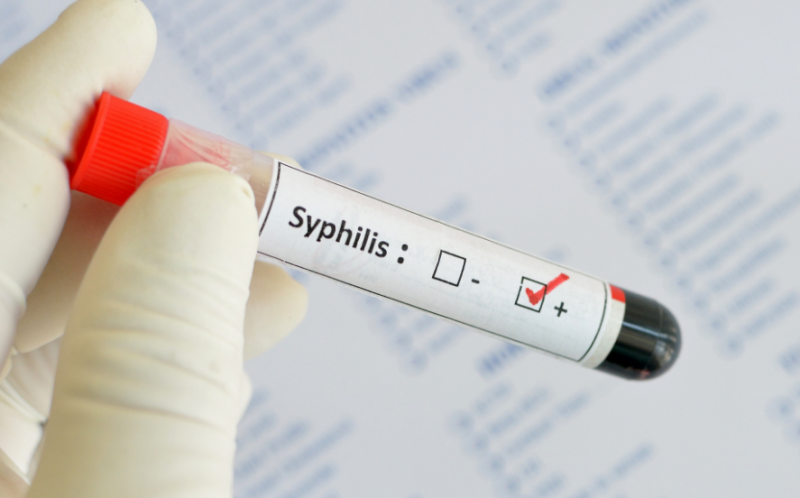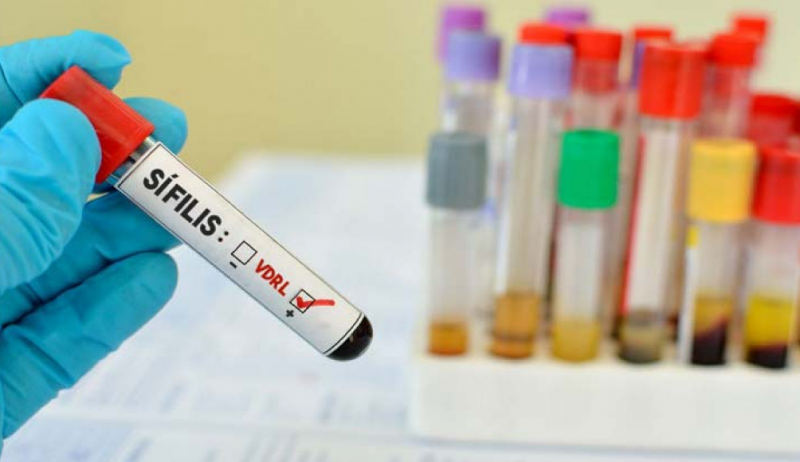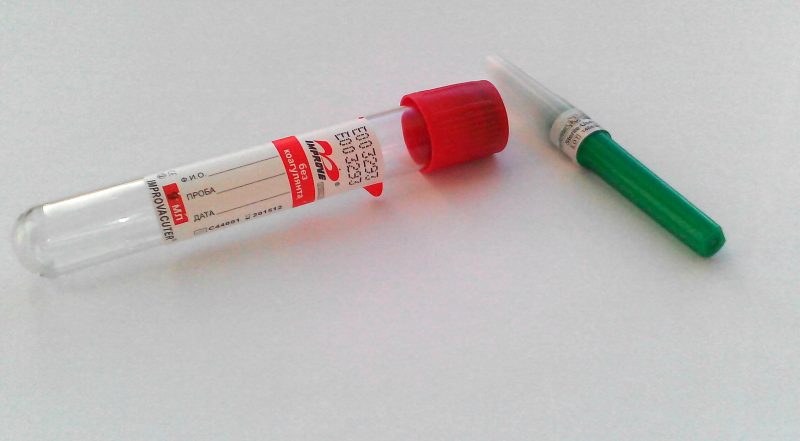The usual component of a medical examination during gestation, before surgery and even for employment is an analysis for syphilis. How is the study conducted, what is its decoding, and how long should its results be expected? The answers to these questions will be useful for everyone to know.
Material Content:
What is a blood test for syphilis?
In order to detect pale treponema (a bacterium that causes syphilis), cerebrospinal fluid, contents of lymph nodes and ulcerated tissue can be taken from a patient for research. But basically enough serological research. This type of diagnosis is called dark-field microscopy. Antibodies to treponema and the DNA of the pathogen are released from the blood serum. A serological examination determines the presence of pathology about a month after infection. If a person has all the characteristic signs of pathology with negative results of such testing, then additional studies are prescribed.
There are two types of serological diagnosis:
- Nontreponemal (non-specific). This type includes: RPR test (reaction of fast plasma reagins), Wasserman reaction (RW), express method of RMP (microprecipitation). They reveal the ability of the created antigen to bind to antibodies to treponemas.
- Treponemal (specific). These studies are conducted if one of the samples from previous studies revealed antibodies to syphilis.This diagnostic area includes: passive hemagglutination reaction (RPHA test), ELISA (enzyme immunoassay), immunoblotting (combination of electrophoresis and ELISA), RIF (immunofluorescence).
What is each of the studies:
- The RW test determines infection at week 6 of the disease by the number of antibody titers.
- RPR - detects antibodies to cytoplasmic membrane phospholipids;
- RMP - gives a positive result after 4 weeks from the moment of formation of a solid chancre;
- RPGA - is especially important in the study of implicit and congenital types of the disease;
- ELISA - detects an infection three weeks after infection, but is often false positive;
- RIF - gives a result 2 months after the penetration of pathogenic bacteria and shows the most reliable results;
- immunoblotting - used primarily to determine the disease in newborns.
Private clinics offer their clients a blood test for syphilis by PCR (polymerase chain reaction). This type of diagnosis is considered the most accurate, and, accordingly, has the highest cost.
If desired, an analysis for syphilis can be performed anonymously.
Indications for laboratory diagnosis
The doctor may ask the patient to take an analysis for syphilis, even if he is fully convinced of the impossibility of infection and does not observe characteristic signs. However, the disease can be transmitted both through blood and through household appliances, which is asymptomatic.
Therefore, a blood test for pathogenic microflora can be prescribed in a variety of situations:
- when planning a child or registering in a antenatal clinic during pregnancy;
- before donating blood as a donor;
- before the operation;
- in case of employment, which requires the passage of a special medical board (military structures, medical institutions, etc.);
- while serving a sentence;
- to obtain permission to check into a hostel;
- in order to detect other sexually transmitted infections in the patient;
- after sex with a possible carrier of infection;
- if an infected mother gives birth to a baby;
- when characteristic symptoms occur (rashes in the genital area, etc.);
- if the initial test for syphilis was positive.
Laboratory diagnosis is also necessary in the treatment of a patient with syphilis to monitor the results of therapy.
A false-positive result that requires repeated analysis can occur in cases where the patient:
- gestation period;
- tuberculosis;
- myocardial infarction;
- stroke;
- brucellosis;
- pneumonia;
- sarcoidosis;
- diabetes;
- oncology;
- autoimmune systemic diseases;
- addiction or alcoholism;
- viral hepatitis;
- benign lymphoblastosis;
- post-vaccination period
Upon receipt of a doubtful result, the analysis is recommended to be repeated after 1.5 - 2 weeks.
Study preparation
An analysis for syphilis is done on an empty stomach. This means that before taking blood, the patient should refrain from eating at least 8 hours. The day before the procedure, it is forbidden to eat fatty foods and drink alcoholic beverages. Just before the procedure, smoking is not allowed. On the day of analysis, you can drink only water.
Women are advised to refrain from douching, sexual intercourse and gynecological manipulations two days before the procedure before taking the test from the vagina.
Diagnostic Algorithm
After preparing the patient, the analysis for syphilis is carried out.
Diagnosis is by the following algorithm:
- To detect syphilis in the primary phase, bacteriological and serological studies are performed.
- When the pathology is found in primary, secondary or latent form, the methods of RMP and ELISA are used. And to confirm the result, an RPHA blood test is used.
- In the case of attachment of a secondary infection, a sample is taken from the patient from ulceration in the genital area.Next, the resulting sample is examined under a microscope.
- If syphilis is in the tertiary phase, then in one third of patients, RMP is negative, and ELISA and RPHA are positive. A weakly positive test indicates cure of the infected patient.
- To exclude a congenital infection, a blood test is performed on the woman in labor and the child. The RMP data is compared, as well as the method of immunoblotting.
For laboratory analysis, breast milk, ejaculate and the contents of the lymph nodes are better than others.
How much syphilis analysis is done
Several factors affect the speed of obtaining analysis results:
- type of study;
- diagnostic institution;
- modern equipment.
Typically, the results of the diagnosis can be known quite quickly, after 1 - 4 days. In the case of laboratory workload, these periods may increase.
Low-cost health facilities most often provide test results only after 1 to 2 weeks.
Deciphering the results
Almost every patient can decipher the results of studies conducted in a non-specific way.
Here is what the “+” or “-” signs indicated on the card can mean:
- ++++ - sharply positive result;
- +++ - a positive reaction;
- ++ - weakly positive test;
- + - doubtful or negative result;
- - - there is no disease.
The decoding of the results of the analysis of specific studies is much more difficult.
ELISA determines immunoglobulins:
- lgA - recent infection;
- lgA and lgM - the end of the incubation period;
- lgA, lgM and lgG - syphilis progresses, the body begins to fight it;
- lgG is a cure for pathology.
Sometimes the results of the study are presented in percent.
Then they can mean the following:
- 20% - negative result;
- 20-30% - doubtful result;
- 30-50% - weakly positive test;
- from 50% - the result is positive.
When the results of dark-field microscopy are represented by the ratio of numbers 1: 2 - 1: 800, then there is nothing to worry about.
Study Shelf Life
The period of relevance of the analysis results depends on the objectives of its implementation. For example, if the study was carried out during the medical commission, it will be valid for another year. During gestation, the result is relevant one trimester. And for patients at risk (drug addicts, people who have erratic sexual relations, etc.), the analysis will have the shortest shelf life.


















